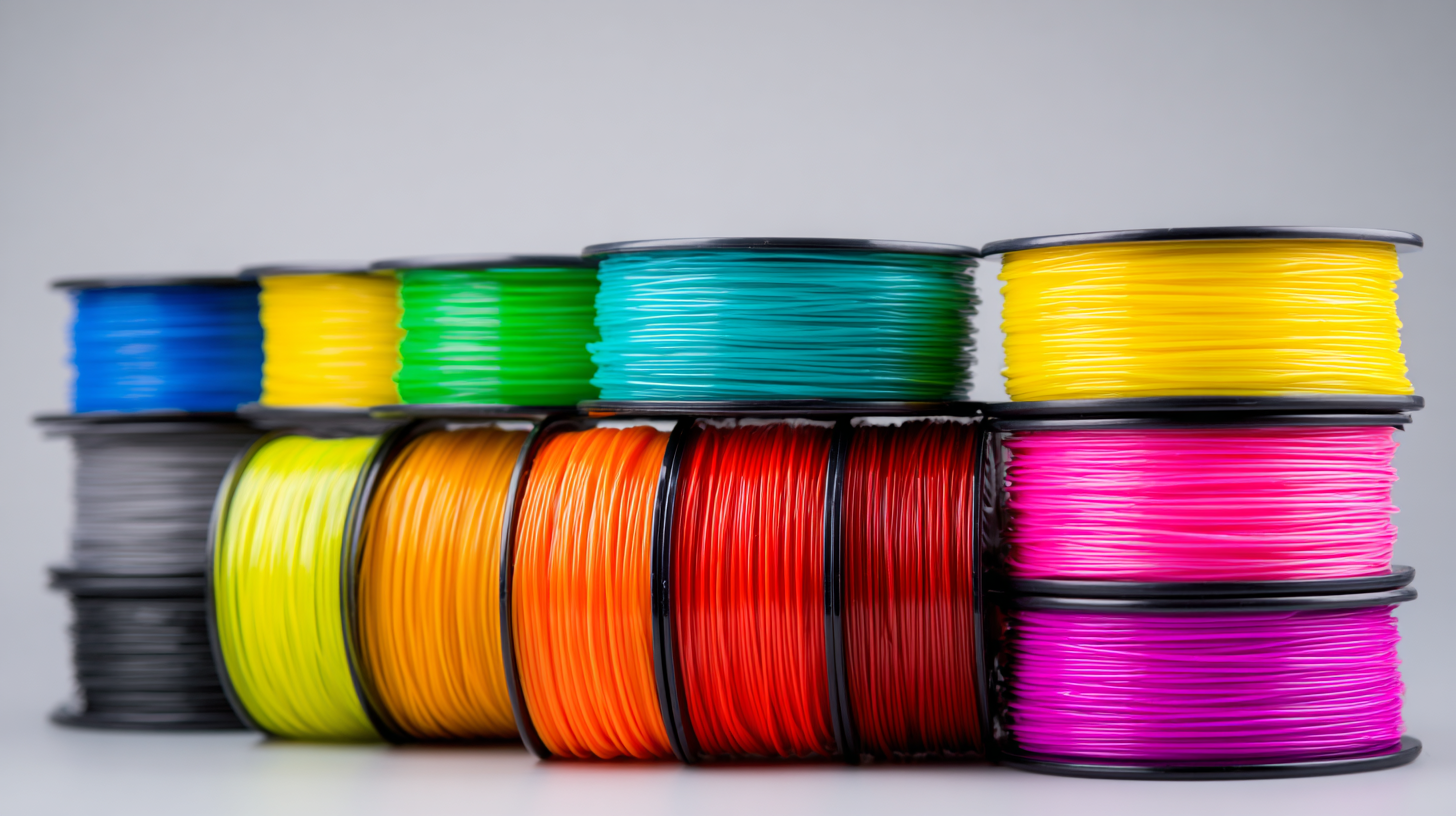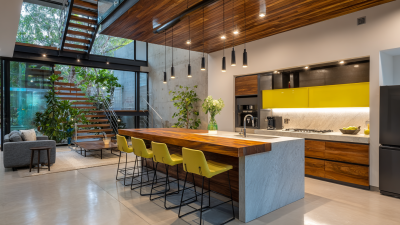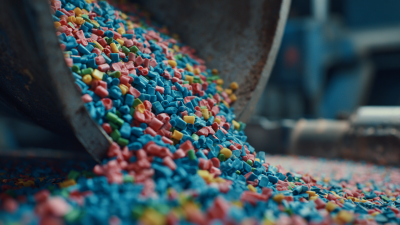In recent years, the usage of thick plastic in DIY projects and home improvements has seen a significant rise, driven by its versatility and durability. According to a report by the Plastic Industry Association, the market for thicker plastics is projected to grow by 5% annually, as more homeowners and DIY enthusiasts look for materials that offer both strength and resilience. This trend reflects a growing recognition of thick plastic’s capabilities in various applications, ranging from construction and insulation to decorative upcycling projects.

Expert John Smith, a leading authority in the field of plastic materials, states, "The right choice of thick plastic can enhance the longevity and performance of any DIY project, transforming potential challenges into opportunities for creativity." Smith’s insights underscore the importance of selecting the appropriate thickness and type of plastic for specific needs, ensuring that projects not only look good but also stand the test of time. As we delve into the considerations of choosing the best thick plastic for your needs, it is essential to understand the specific characteristics of different options available in the market today.
When embarking on DIY projects, understanding plastic thickness measurements is crucial for selecting the right material. Plastic thickness is typically measured in mils (one thousandth of an inch) or millimeters, with common household plastics ranging from 5 mil (0.127 mm) to 100 mil (2.54 mm). According to the Plastics Industry Association, thicker plastics offer greater durability and resistance to impact, making them ideal for projects that require robustness, such as protective barriers or outdoor applications.
When choosing plastic for your projects, consider the environment in which it will be used. For example, a thickness of 40-60 mil is often recommended for outdoor signs due to its ability to withstand the elements. Additionally, using a thicker gauge can be beneficial in environments with heavy foot traffic or potential impacts.
**Tips:**
1. Always check the manufacturer's specifications for the plastic type you plan to use; compliance with industry standards guarantees quality.
2. Experiment with sample pieces before committing to larger quantities to see how different thicknesses perform in your specific application.
3. Keep in mind that thicker plastics may be more difficult to cut and manipulate, so always have the right tools on hand for your project.
When embarking on DIY projects or home improvements, selecting the right plastic material is crucial. Acrylic and polycarbonate are two of the most popular options, each with distinct properties that suit different needs. Acrylic, known for its excellent clarity and light transmission, is relatively lightweight and easy to cut. It's ideal for projects where aesthetics are a priority, such as custom picture frames or decorative panels. However, it’s important to note that acrylic may be more prone to cracking under impact compared to its competitor.
On the other hand, polycarbonate boasts remarkable toughness and impact resistance, making it a superior choice for projects that require durability. This material is often used for safety glazing, outdoor applications, or even greenhouses where environmental exposure is a factor. Polycarbonate can be more challenging to work with, as it's heavier and requires specialized tools for cutting and shaping.
**Tips:** When deciding between acrylic and polycarbonate, consider the specific demands of your project. If clarity and aesthetic appeal are your goals, opt for acrylic. For projects requiring durability, polycarbonate is the go-to. Always ensure to wear protective gear when working with these materials to avoid accidents. Additionally, test each material’s compatibility with your project’s environment to achieve the best results.
When selecting thick plastic for your DIY projects, durability and longevity should be your top priorities. First and foremost, consider the type of plastic you are working with. Common options include polyethylene, polycarbonate, and acrylic, each varying in strength, UV resistance, and impact resistance. For outdoor projects, polycarbonate is often the best choice due to its high durability and resistance to weather conditions, ensuring your work withstands the test of time.
Another key factor is the thickness of the plastic itself. Thicker materials generally offer better protection against wear and tear. However, don’t overlook the application type; for instance, a thicker sheet may be necessary for structural projects, while thinner options might suffice for decorative uses. Additionally, always examine the manufacturer's specifications, including weight tolerance and heat resistance, to ensure the material can serve its intended purpose without compromising performance. By keeping these factors in mind, you can make a more informed decision when choosing thick plastic for your projects.
| Dimension | Material Type | Thickness (mm) | Durability Rating | Common Uses |
|---|---|---|---|---|
| 4' x 8' | PVC (Polyvinyl Chloride) | 3 | Excellent | Signage, Outdoor Projects |
| 3' x 6' | HDPE (High-Density Polyethylene) | 5 | Very Good | Containers, Outdoor Furniture |
| 2' x 4' | Polycarbonate | 6 | Exceptional | Greenhouses, Safety Shields |
| 4' x 10' | Acrylic | 8 | Good | Display Cases, Windows |
| 3' x 5' | Fiberglass | 10 | Excellent | Transport, Marine Applications |
When selecting thick plastic materials for DIY projects or home improvements, adhering to industry standards is essential for ensuring quality, safety, and longevity. Two major organizations, ASTM International and the International Organization for Standardization (ISO), provide guidelines that cover the properties and testing methods for plastics used in construction. ASTM standards, such as ASTM D638, specify the tensile properties of plastics, ensuring that the materials can withstand the demands of various applications. For instance, plastics meeting these standards typically have a tensile strength ranging from 20 to 70 MPa, making them suitable for structural support in home projects.

ISO guidelines complement ASTM standards by focusing on durability and environmental impact. The ISO 4892 series, which addresses the methods for testing the weathering of plastics, ensures that materials maintain their integrity against elements like UV exposure and moisture. Reports indicate that plastics adhering to ISO standards can exhibit a lifespan extension of up to 30% under extreme weather conditions when compared to non-compliant materials. This comprehensive approach is vital for homeowners and DIY enthusiasts looking to invest in durable, effective materials for their construction projects.
When planning home improvement projects, budgeting effectively for materials is crucial, and thick plastic can be an economical choice. The price of thick plastic varies based on factors such as thickness, quality, and supplier. By comparing prices across different retailers and considering bulk purchasing options, homeowners can find significant savings. It's also essential to analyze the long-term benefits versus initial costs, as investing in durable plastic may prevent the need for costly replacements down the line.

Additionally, homeowners should evaluate the specific applications of thick plastic in their projects. Whether using it for insulation, protective barriers, or crafting furniture, determining the right type of plastic not only aids in effective budgeting but also ensures functional success. Incorporating thick plastic can enhance the durability of repairs or installations, potentially saving money on maintenance. Therefore, a thorough cost-effectiveness analysis is vital, allowing homeowners to prioritize their spending while maximizing the value derived from their investments in thick plastic.






